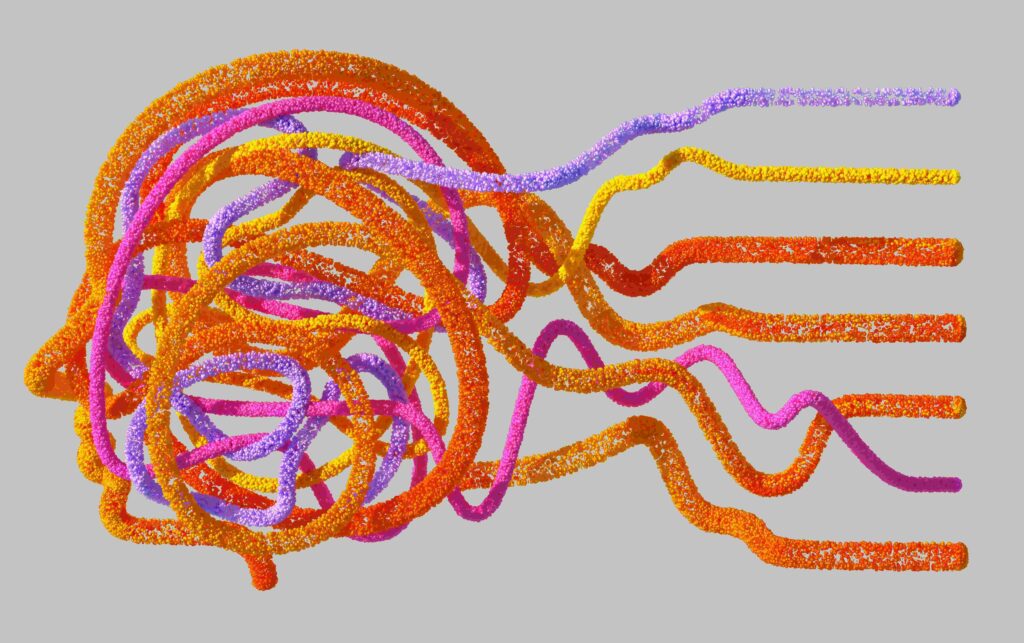The Illusion of Multitasking: How Our Brain Handles Task Switching

In today’s fast-paced world, multitasking has become a seemingly indispensable skill. From juggling work tasks to managing personal responsibilities, the ability to handle multiple activities simultaneously is often hailed as a hallmark of efficiency. However, a closer examination of the psychology of multitasking reveals that our perception of productivity may not always align with reality. The reality is far more complex than it appears. What we commonly refer to as multitasking is often just task switching, and our brains have their own way of handling complex mental workloads.
In this article, we will delve into the intricate cognitive processes behind multitasking and task switching, exploring how our brain manages it and why the illusion of multitasking may not be as productive as we think.
The Allure of Multitasking: A False Sense of Productivity
Multitasking is often viewed as a way to maximize time and productivity. The idea of accomplishing more tasks in less time is undoubtedly tempting. In a world inundated with information and demands, multitasking appears to be the solution to staying on top of everything. However, the appeal of multitasking is not without its limitations.
Task Switching vs. Multitasking
To understand the concept better, we must differentiate between true multitasking and task switching. True multitasking refers to the simultaneous execution of multiple tasks, where each task demands its own cognitive resources. For instance, driving while listening to music is an example of true multitasking, as both activities require separate mental faculties.
On the other hand, what we commonly perceive as multitasking often involves rapidly switching our attention between different tasks. This is task switching. For example, toggling between emails, writing reports, and answering phone calls at work may feel like multitasking, but it’s actually our brain rapidly switching its focus from one task to another.
The Brain’s Role in Task Switching

Our brains have evolved to be exceptionally good at task switching, thanks to a network of cognitive processes that enable us to transition from one task to another seamlessly. The key brain structures involved in this process are the prefrontal cortex and the anterior cingulate cortex, two regions responsible for executive functions like attention, decision-making, and working memory.
When we engage in task switching, the prefrontal cortex evaluates the importance of each task and decides which one deserves our attention at any given moment. It then communicates with the anterior cingulate cortex, which helps us shift our focus accordingly. This dynamic duo allows us to switch between tasks rapidly and seemingly effortlessly.
The Cost of Task Switching: Cognitive Limits and Attentional Constraints
The human brain is a remarkable organ with a finite capacity for processing information. While it can switch rapidly between tasks, it cannot truly focus on multiple activities simultaneously. This is because of the concept of attentional capacity—the limited cognitive resources that determine how much information we can process at any given moment.
When individuals attempt to multitask, they are essentially engaging in rapid task-switching. While our brains are adept at task switching, this ability comes at a cost known as “switching cost.” It includes the time it takes to transition between tasks and the mental effort required to refocus attention. As a result, multitasking can actually cause increased mental fatigue, increasing the chances of errors and ultimately compromising the overall efficiency. Moreover, constant task switching can lead to increased stress, reduced quality of work and decreased job satisfaction.
In addition to the switching cost, multitasking also incurs a cognitive cost known as “context switching.” Each time an individual transitions between tasks, they often lose the context of previous task. They need to adjust their mental context, recall relevant information, and reorient themselves to the task’s requirements. This cognitive effort not only consumes time but can also lead to mental fatigue and decreased overall performance.
The Myth of Multitasking Productivity
One of the biggest misconceptions about multitasking is that it makes us more productive. In reality, it often has the opposite effect. When we engage in task switching, we may feel busy and accomplished, but the quality of our work and our ability to focus on complex tasks suffer. Studies have consistently shown that multitasking can decrease our overall productivity by up to 40%. This is especially true for tasks that require high levels of cognitive engagement or deep thinking.
For example, answering emails while participating in a conference call might seem like a productive use of time, but it can actually hinder one’s ability to actively participate in the discussion and comprehend the nuances being discussed. Similarly, trying to write an important report while toggling between social media platforms might lead to errors and a lack of focus on the task at hand.
Furthermore, the constant bombardment of stimuli from switching between tasks can lead to mental fatigue and decreased creativity. Our brains need time to rest and consolidate information, and constant task switching disrupts this natural process.
Enhancing Productivity: Selective Attention and Task Prioritization
While multitasking might appear to offer a shortcut to productivity, it is prone to errors and likely to diminish the quality of work. The psychology of multitasking reveals the importance of selective attention and task prioritization in enhancing efficiency. Instead of attempting to tackle everything at once, individuals should focus on prioritizing tasks based on their importance and the cognitive resources they demand. This approach allows for deeper engagement and higher-quality performance on each task, resulting in a more efficient use of time and improved outcomes.
By dedicating focused attention to one task at a time and minimizing distractions, individuals can enhance their cognitive performance and achieve better results.
Strategies for Effective Task Management
To enhance productivity and reduce the negative effects of task switching, it’s essential to adopt strategies that align with our brain’s capabilities:
1. Prioritize tasks: Use a task management system to prioritize your tasks, allowing you to focus on high-priority items without constantly switching between them.
2. Set boundaries: Allocate specific time blocks for different tasks, minimizing the need for frequent switching.
3. Minimize distractions: Turn off notifications and create a dedicated workspace to reduce interruptions.
4. Practice mindfulness: Develop the habit of being fully present in the task at hand, which can help reduce the temptation to switch tasks.
5. Take breaks: Allow your brain to rest and recharge by taking short breaks between tasks. These breaks can improve overall productivity.
The Take Away
The psychology of multitasking reveals that our innate desire to accomplish more tasks simultaneously is often at odds with the brain’s cognitive limitations. The illusion of multitasking may be fascinating, but it’s crucial to recognize that our brains are better suited for task switching than true multitasking. Rather than succumbing to the illusion of efficiency, we can optimize our productivity by prioritizing tasks, minimizing context switching, and embracing single-tasking. By understanding the cognitive costs of multitasking and making intentional choices about how we allocate our attention, we can navigate the complexities of modern life more effectively and achieve higher levels of performance and satisfaction.





Responses